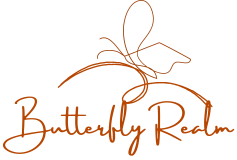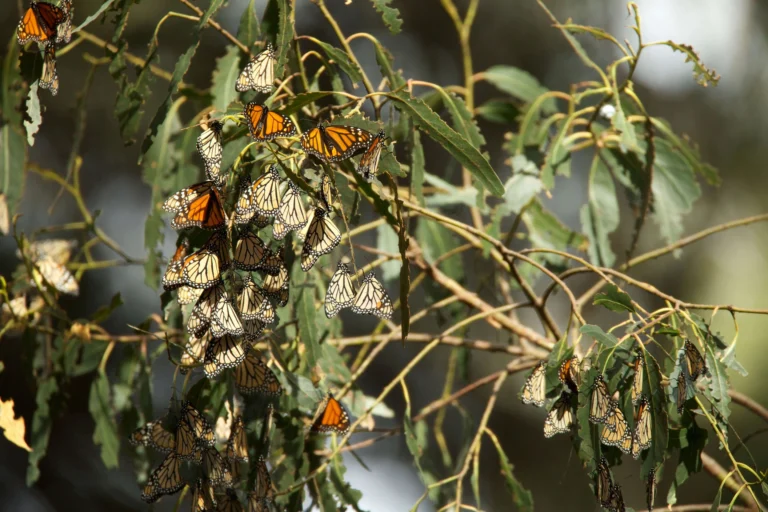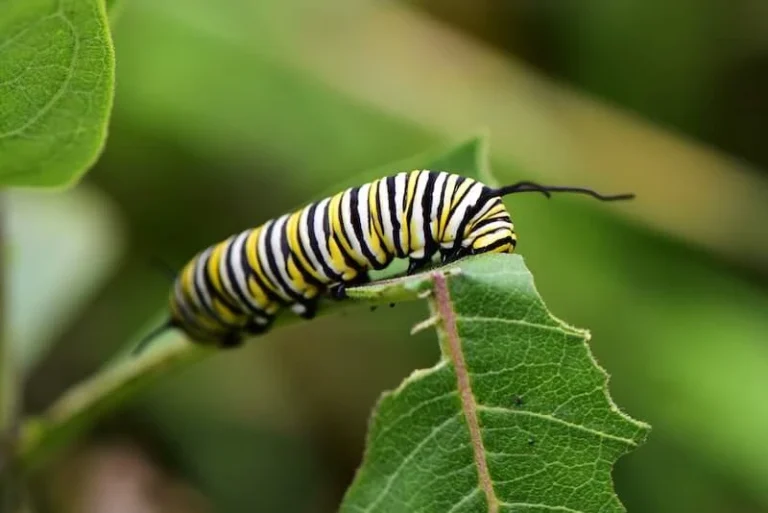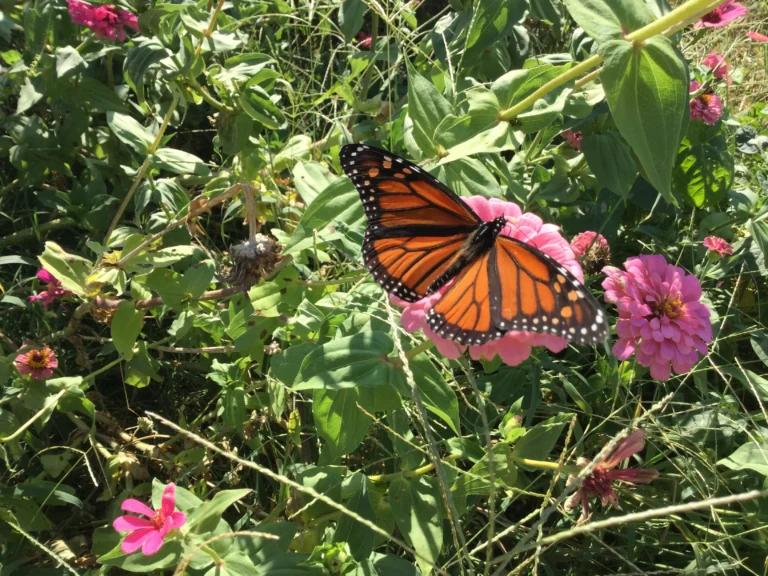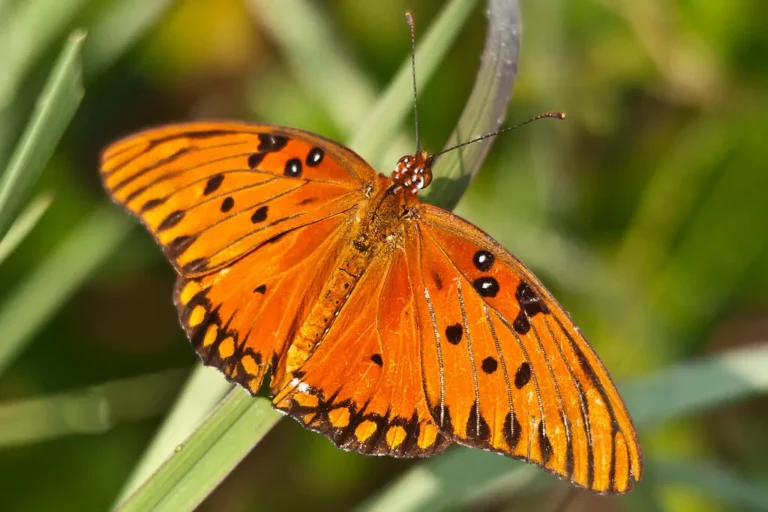What Do Monarch Butterflies Eat? Diet & Survival Tactics
Quick Answer To What Do Monarch Butterflies Eat: Monarch butterflies enjoy a varied diet throughout their life stages. As caterpillars, they exclusively eat milkweed plants. As adults, they feed mainly on nectar from flowers, but they can also sip juices from fruits. Creating butterfly gardens with native plants can help support them in their natural habitat.
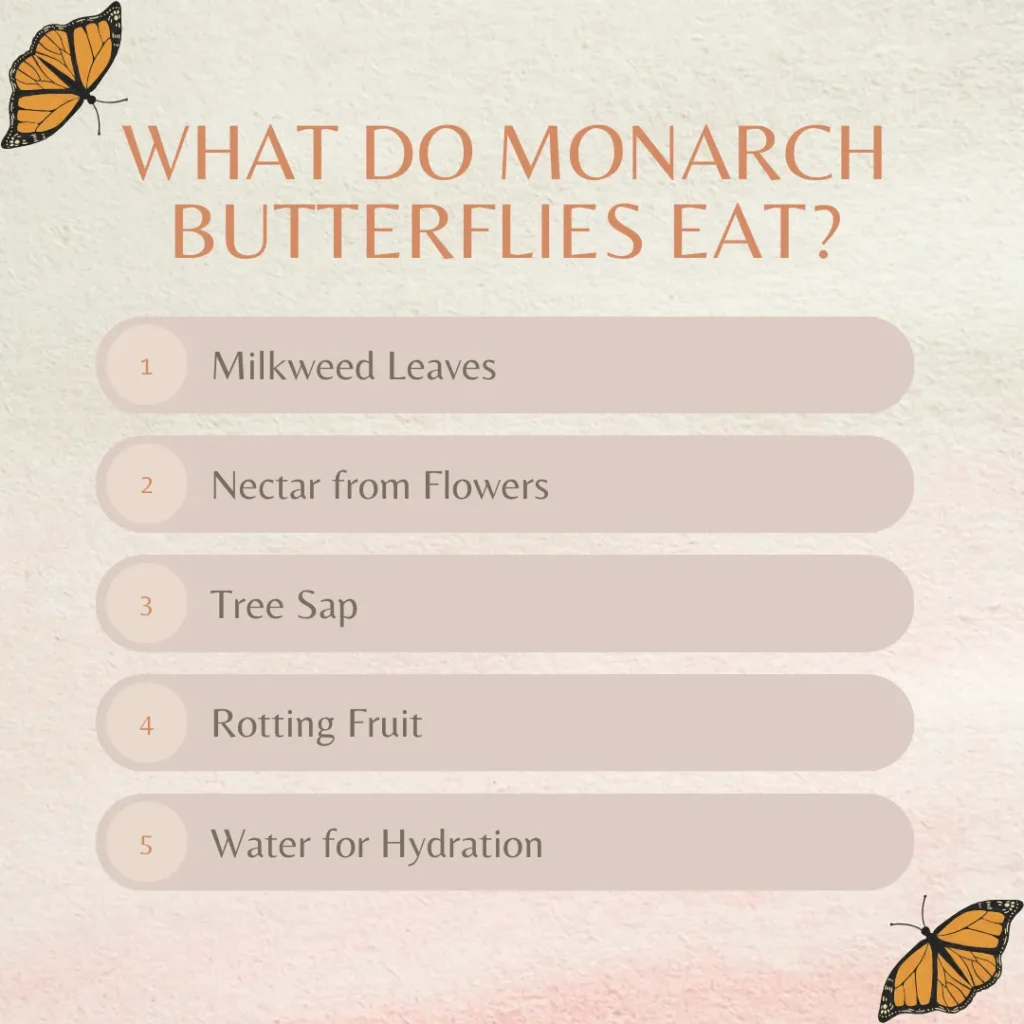
Table of Contents
Overview of Monarch Butterflies: Habitat, & Migration Patterns
Monarch butterflies are truly amazing creatures. They live in many parts of the world, including North America and Australia. These butterflies are well known for their long migration journey, a fascinating process you can learn more about in our monarch butterfly migration guide.
They travel many miles from Canada to Mexico every year to find a warmer place for the winter. Just like birds, they return home when it gets warm again.
Now, let’s talk about what monarch butterflies eat. Just like us, butterflies need food to live and grow. But, their choice of food is not the same throughout their life. They like different foods when they are babies, and when they grow up.
We will learn more about what they eat at different stages of their life and in different parts of the world in this article. Let’s find out more!
Importance of Diet at Each Stage
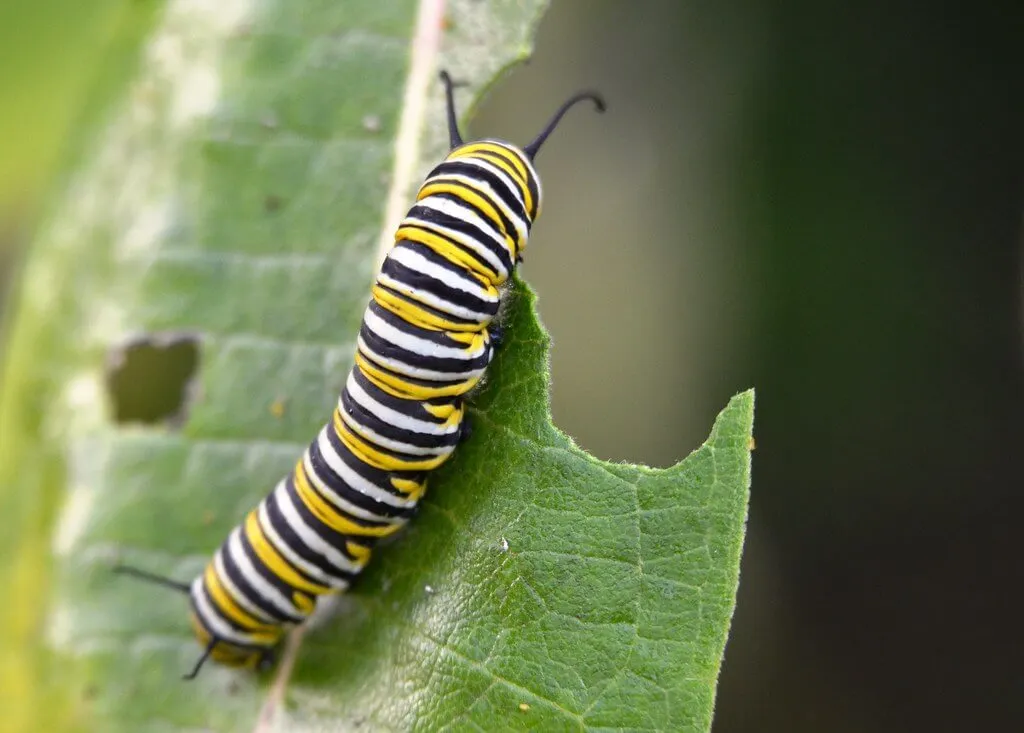
What do monarch butterflies eat after they hatch?
When monarch butterflies are just tiny babies, they have a very special diet. As soon as they come out of their eggs, they start eating the shell of the egg as their first meal. After that, they have a big appetite for milkweed leaves.
This plant is very important for them because it helps them grow fast and keeps them safe from enemies, as it contains substances that make them taste bad to predators.
During migration:
As grown-ups, monarch butterflies have to go on a long journey to find a warmer place during winter. This journey is not easy, and they need a lot of energy for it. During this time, they mainly eat flower nectar. This nectar gives them the strength to fly long distances. They also drink water from wet leaves and puddles to stay hydrated.
Differences in diet in Australia, New Zealand, Hawaii, and other Regions
What Do Monarch Butterflies Eat in Different Places?
Monarch butterflies like to eat different things in different parts of the world, including those regions where you might encounter the elusive blue monarch butterfly.
Here’s what they like to eat in a few places:
- Australia
- Favorite Foods: Nectar from native flowers like eucalyptus
- What They Do: In Australia, monarch butterflies really enjoy the sweet nectar from eucalyptus flowers. These flowers are a popular choice for them.
- New Zealand
- Favorite Foods: Nectar from swan plants and buddleia flowers
- What They Do: In New Zealand, monarch butterflies are often seen eating swan plants and buddleia flowers. They like the nectar from these flowers a lot.
- Hawaii
- Favorite Foods: Nectar from crown flowers and other local flowers
- What They Do: In Hawaii, monarch butterflies like to eat the nectar from crown flowers. These flowers are special in this area.
No matter where they are, monarch butterflies always love eating nectar from flowers. It is their favorite food in all parts of the world.
What Do Monarch Caterpillars Eat?

Exclusive dependence on milkweed
Monarch caterpillars have a special liking for milkweed plants. This is the primary plant they consume, showing a clear preference for certain parts of it.
They primarily eat the leaves, which provide them with vital nutrients and a sort of protective shield against predators due to a special substance found in the milkweed leaves.
Varieties of milkweed
There are various types of milkweed plants available in different regions. Caterpillars are known to munch on different kinds such as common milkweed, swamp milkweed, and butterfly weed.
This particular diet helps in defining the life cycle of monarch butterflies, especially in their early stages.
Importance of milkweed in their diet
The diet of monarch butterfly larvae is quite dependent on milkweed, which provides them with the necessary nutrients to grow and thrive.
It’s a crucial part of their diet, helping them to develop from larvae into fully-fledged butterflies. They feed intensively on these plants, getting ready for the beautiful transformation that awaits them.
Preferences
While milkweed is their primary source of nutrition, the caterpillars do have preferences when it comes to their eating habits. They seem to enjoy the younger, tender leaves of the milkweed plant more.
These leaves are not only softer and easier to consume but also richer in nutrients, ensuring the healthy growth of the caterpillars.
Adult Monarch Butterfly’s Diet
Primary diet
Adult monarch butterflies have a different diet compared to when they are caterpillars. They mainly feed on the nectar of various flowers to get the energy they need.
This sugary fluid gives them all the necessary nutrients to fly, reproduce, and live a healthy life.
Nectar: The staple diet
Nectar is the staple diet for adult monarch butterflies. It’s like a sweet treat that gives them a lot of energy. They use their long, tube-like tongue called a proboscis to suck up the nectar from flowers.
This way, they can visit many flowers in a day, enjoying a variety of nectar sources.
Preferred flower species
Butterflies are also a bit picky when it comes to the flowers they choose for nectar. They have a few favorites, like milkweed flowers, coneflowers, and zinnias.
They seem to like these because they provide a lot of nectar, which is easy for them to reach with their proboscis.
Differentiating between plant and flower consumption
Though the adult monarchs primarily rely on nectar, they sometimes feed on the water and nutrients from plants and trees, especially during migration.
They are known to extract moisture and nutrients from a variety of plants to sustain themselves on their long journeys.
Supplemental Food Sources
Besides the nectar, adult monarch butterflies also enjoy other food sources. For instance, they love feasting on ripe fruits.
They can be found sipping the juices from fruits like watermelon, oranges, and bananas. This not only gives them a change of taste but also provides additional nutrients and energy.
Captivity diet
When kept in captivity, the diet of monarch butterflies changes slightly. People who raise them usually feed them a mixture of sugar water to mimic nectar, along with offering ripe fruits to ensure they receive all necessary nutrients.
You might also be interest in our Monarch Butterfly Meanings & Symblosims guide.
Feeding Behaviors and Adaptations
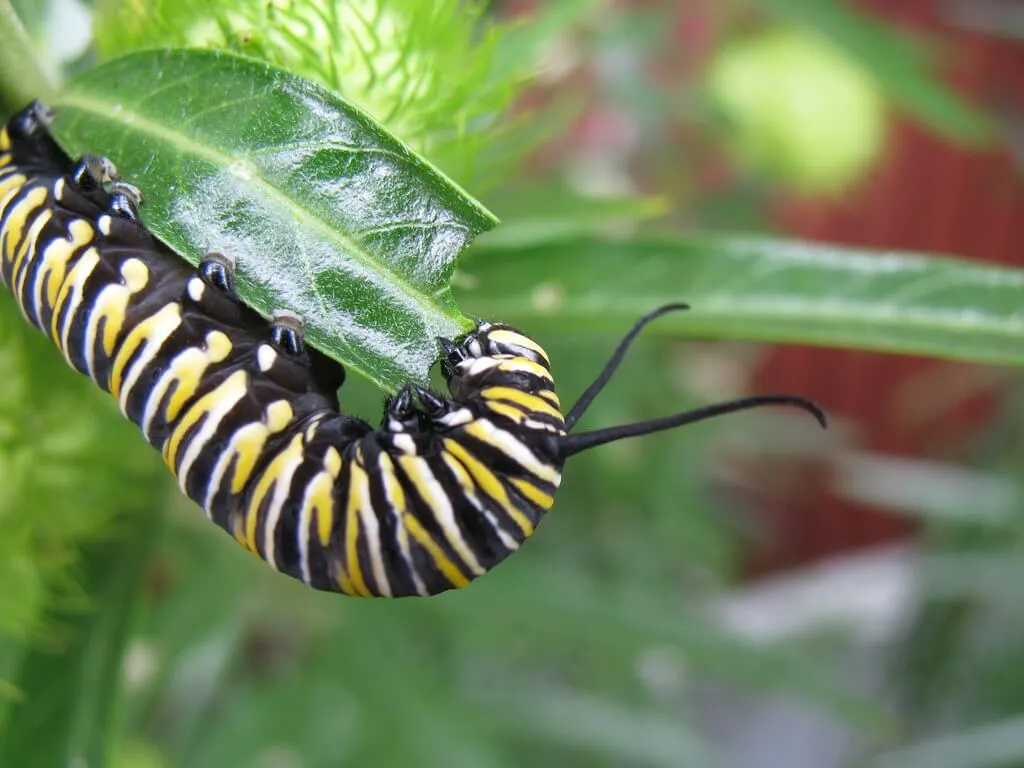
Feeding immediately after hatching
Just after hatching, the little monarch butterflies have quite the appetite. They begin their life by eating their own eggshell, a rich source of nutrients that gives them a strong start.
Then, they swiftly move to the milkweed leaves, munching away to grow quickly.
The variety in the diet as they mature
As monarch butterflies grow, their diet evolves as well. Initially being voracious eaters of milkweed leaves, as they transform into beautiful butterflies, their preference shifts towards nectar and other sources of food.
This shift is not only a change in preference but a necessary adaptation that provides them with different kinds of nutrients as they mature.
Specific behaviors
Monarch butterflies have some specific behaviors when it comes to their eating habits. For example, when they are sipping nectar from flowers, they are known to flutter their wings constantly to maintain balance.
Additionally, they exhibit a strong preference for brightly colored flowers, which are easily spotted during their flights.
Ecological Interactions and Adaptations
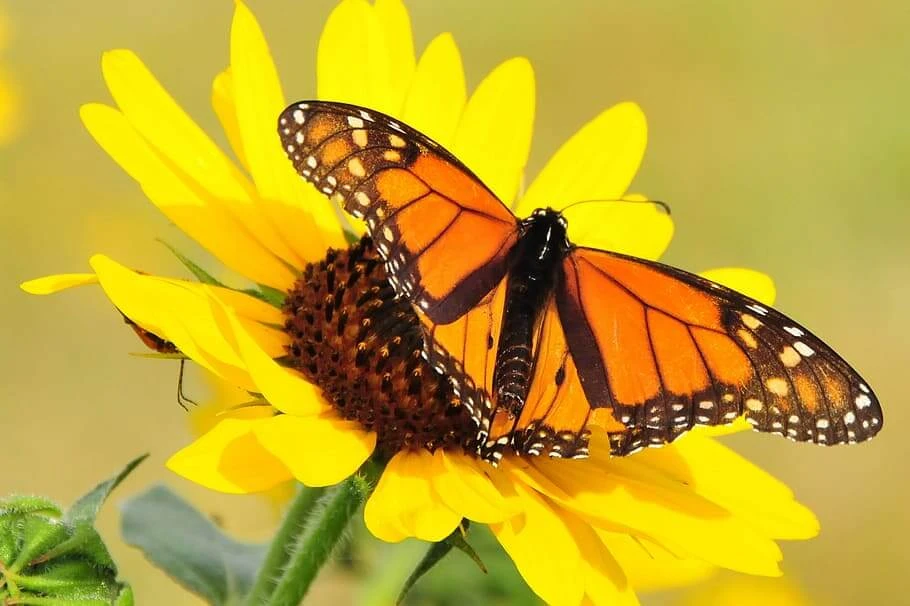
Plant interactions
Monarch butterflies have a special relationship with plants, especially during their caterpillar stage. They mostly feed on milkweed plants, which in turn receive a kind of protection as the butterflies deter certain pests.
This mutual relationship is a wonderful example of ecological interaction at its finest.
Adaptations for feeding on specific parts of plants
Throughout their lifecycle, monarch butterflies have developed several adaptations to feed more efficiently on specific parts of plants.
Their mouthparts, for instance, are perfectly designed to extract nectar from flowers, with a long, tubular tongue that can reach deep into blossoms.
As caterpillars, their strong jaws help them to chew the leaves of the milkweed plant effectively.
Predators and defense mechanisms stemming from their diet
Monarch butterflies have a brilliant strategy to protect themselves from predators, and it all starts with their diet. The milkweed plant, which forms a major part of their diet, contains toxins that are harmful to most predators.
By consuming these plants, the butterflies make themselves less appetizing to potential threats, hence reducing the chances of being preyed upon.
This clever use of their diet as a defense mechanism showcases their remarkable adaptability in the wild.
Human Interaction and Conservation

Conservation concerns surrounding their dietary needs
The diet of monarch butterflies is deeply linked to their survival, and unfortunately, their favorite meal – the milkweed plant, is getting harder to find due to habitat loss and changes in land use.
This has sparked a wave of conservation efforts aimed at preserving the essential feeding grounds for these butterflies.
It’s vital that we understand the unique dietary needs of monarch butterflies to ensure their survival for generations to come.
How humans can assist: Creating butterfly gardens with specific plants and flowers
One fantastic way humans can assist in the conservation of monarch butterflies is by creating butterfly gardens.
These gardens, filled with a variety of nectar-producing flowers and milkweed plants, can provide a rich feeding ground for both adult butterflies and caterpillars.
Including plants like milkweed, coneflowers, and zinnias in your garden can really help these beautiful creatures find the food they need.
Encouraging readers to get involved in conservation efforts
If you’re reading this and wondering how to get involved, it’s quite simple! Start by growing butterfly-friendly plants in your garden or community spaces. You could even join or support organizations that are working towards the conservation of monarch butterflies.
Your efforts, no matter how small, can contribute to preserving these wonderful creatures and the environments they thrive in.
Tips and Guide for Creating a Garden for Monarch Butterflies
Creating a butterfly garden can be a joyful and fulfilling activity. Not only does it beautify your space, but it also provides a nurturing environment for monarch butterflies.
Here’s a simple guide to help you set up a butterfly garden specifically designed to attract and nurture monarch butterflies:
Selecting the Right Location
The first step in creating a butterfly garden is choosing the right location. Monarch butterflies prefer sunny spots protected from strong winds.
A place where they can easily access the warmth of the sun, especially during the morning, would be an ideal choice. Try to select a spot that receives a good amount of sunlight throughout the day.
Choosing Plants for Monarch Butterflies
When it comes to selecting plants, focus on including a variety of milkweed species, as this is the primary food source for monarch caterpillars.
For adult monarchs, incorporate nectar-rich flowers into your garden. Plants like butterfly bushes, coneflowers, and zinnias are excellent choices as they provide ample nectar for the butterflies.
Remember to choose native plants for your region, as these will best suit the local monarch population.
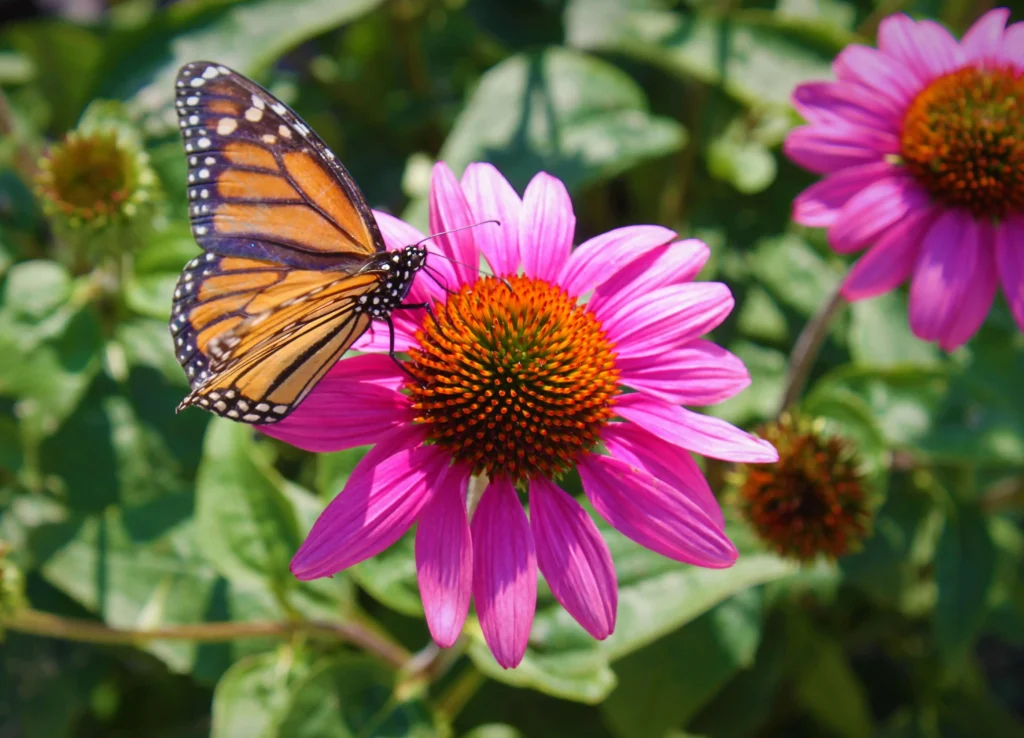
Providing a Water Source
Butterflies need water, but not in the same way we do. They prefer to sip water from damp patches on the ground.
Creating a ‘butterfly puddle’ by filling a shallow dish with water and placing it on the soil can be a great way to provide them with the hydration they need.
You can also create damp spots by watering the soil directly. These spots become prime locations for butterflies to gather and sip water.
Avoiding Pesticides
Pesticides are harmful to butterflies. When creating a butterfly garden, it’s essential to avoid using pesticides, which can be lethal to both caterpillars and adult butterflies.
Instead, embrace organic gardening practices to protect these delicate creatures and provide them with a safe and nourishing environment.
Uncover layer off of monarch butterflies rich symbolism and significance in our article on the meanings associated with yellow monarch butterflies.
Quick FAQs
What do you feed a monarch butterfly?
In the wild, monarch butterflies primarily feed on nectar from flowers. However, if you find a monarch butterfly in distress, you can prepare a solution of sugar and water (4 parts water to 1 part sugar) to feed them temporarily.
Remember to place them back in their natural habitat as soon as possible.
How do monarch butterflies eat?
Monarchs have a specialized mouthpart called a proboscis, which is a long, tube-like tongue. They use this to suck up the nectar from flowers. It’s quite fascinating to watch as they unfurl this tongue to feed on their favorite flowers.
Why is milkweed important to monarch butterflies?
Milkweed is vital for monarch butterflies, especially during their caterpillar stage. It is the only source of food for monarch caterpillars.
Additionally, the plant provides necessary toxins that caterpillars store in their bodies, making them less appetizing to predators.
Can monarch butterflies eat other things besides nectar and milkweed?
While nectar and milkweed are the primary sources of food, monarch butterflies can also feed on the juices of ripe fruits, like bananas and watermelons, especially when nectar sources are scarce.
Conclusion
After exploring the vibrant world of monarch butterflies, it’s clear that their diet plays a significant role in their life cycle, ecological interactions, and survival.
From the milkweed-dependent caterpillar stage to the nectar-loving butterfly phase, understanding their diet gives us a glimpse into the fascinating life of these wonderful creatures.
But, the conversation doesn’t end here! Now that you know the answer to “Monarch butterflies, what do they eat?”, it’s time to take a step forward. It’s not just about knowing their diet but also about actively participating in conserving their habitats.
We encourage you to become a guardian of these beautiful beings. Start by setting up a butterfly-friendly garden in your backyard, or by supporting organizations focused on the conservation of monarch butterflies.
Your actions can make a real difference, fostering a world where monarch butterflies can flutter freely, gracing us with their beauty for years to come.
Together, let’s spread our wings and fly toward a brighter future for monarch butterflies!
